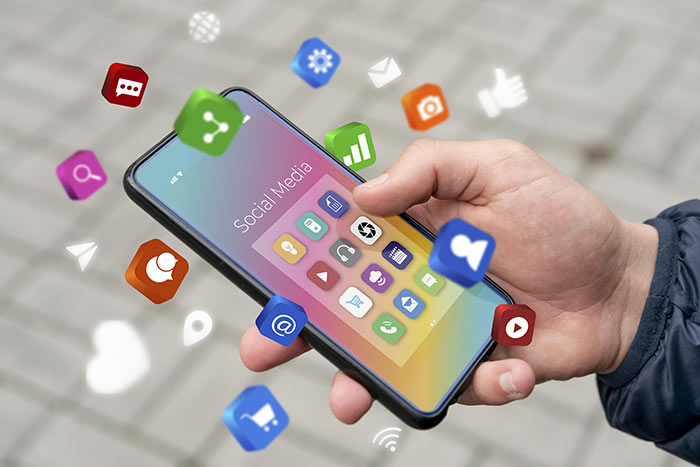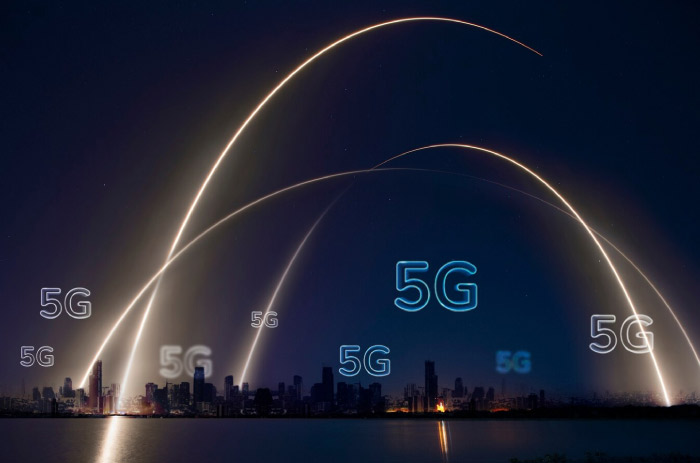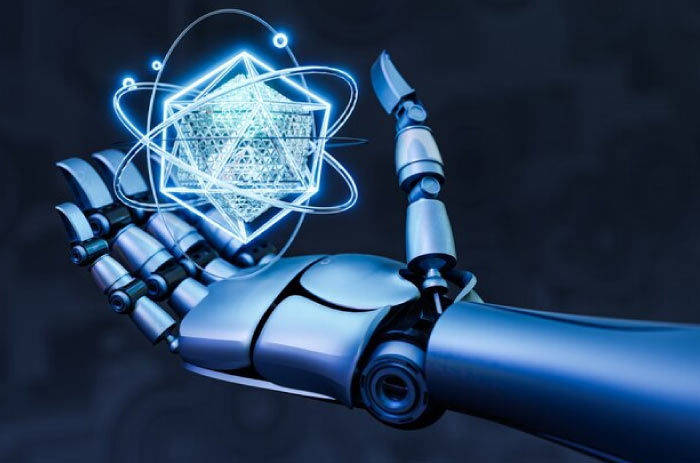Close your eyes and try to imagine a future where machines don’t just follow instructions—they think, learn, and adjust like humans. Now picture that world blending real-life experiences with digital ones so smoothly that you can’t even tell where one ends and the other begins. That’s the direction our world is heading. And with climate change becoming more serious, new technologies are also being created to help our planet at the same time. As the first month of the second quarter of 2025 concludes, we’re not just talking about futuristic ideas anymore. The technology revolution is here, and it’s beginning to change everything—how we live, work, and connect with each other. In this breakdown, we’re diving into the hottest tech trends that are expected to shape the future starting in 2025.
Hot Jobs in the Tech World
With the new year rolling in, hiring in the tech field is on fire. A report by Robert Half Technology shows that companies are eager to bring in fresh talent. In fact, job gains are higher than the number of positions being cut. And guess what? Managers are ready to hire—61% are looking to create new positions, while another 34% just want to fill roles that are already open.
At the same time, workers aren’t just sitting still. A huge portion of people in tech (64%) are thinking about switching jobs. This means companies aren’t just hiring—they’re working hard to keep the people they already have.
Hiring fast has become a big deal now. It’s getting tough to find skilled workers. And if the pay is right, 89% of tech professionals are even open to returning to the office. That’s a pretty clear message to employers.
The report also listed the top 15 tech roles that companies are looking for the most in 2025. It even included salary ranges so businesses can stay competitive in the talent race.
1. Green Hydrogen – Clean Energy from Water?

Think about using water to create fuel. Sounds like science fiction, right? But that’s what green hydrogen is all about. It’s made by using electricity (from renewable sources) to split water into hydrogen and oxygen. No pollution, just clean energy.
Hydrogen can be used in so many ways: it powers vehicles, heats buildings, and even creates electricity. And the only thing it gives off when burned? Water vapor. No harmful gases.
This energy source could become super important as the world moves away from dirty fuels. It’s especially useful in areas that are hard to power with electricity alone—like big factories, airplanes, and heavy-duty trucks.
Experts say green hydrogen could provide nearly a quarter of the world’s energy by 2050. That’s not small potatoes—it’s a $2.5 trillion opportunity. Talk about a green revolution.
2. Generative AI – Not Just a Buzzword
AI used to sound kind of scary to a lot of people. But generative AI is proving that it’s more helpful than harmful. This year, it’s taking the spotlight.
From 2021 to 2022, job listings that mention generative AI rose by 44%, according to McKinsey. Clearly, companies are catching on to its usefulness.
This type of AI helps with everything from writing emails to creating art. It’s like having a super-intelligent assistant who never sleeps. More people are starting to understand how it works, especially since it’s built into tools we use every day—like search engines and Microsoft Office.
Sure, there are still questions about how fair and safe it all is, but 2025 is when AI really started becoming a normal part of daily life. And it’s only going to get bigger from here.
3. ChatGPT – The AI Assistant Everyone’s Talking About

You’ve probably heard of ChatGPT. This AI tool exploded in popularity during early 2024. It’s like a super brain you can talk to anytime.
It helps companies answer customer questions, create social media posts, and even train new employees. Writers love using it to brainstorm and create rough drafts, while students use it as a tutor that’s always available.
ChatGPT learns by studying massive amounts of text, and that learning process helps it become smarter over time. It’s a big part of how AI is changing the way we work, learn, and solve problems.
4. The Internet of Things (IoT) – Everyday Items, Smarter Than Ever

You might already use IoT without even knowing it. Have a smart thermostat at home? A fitness tracker? Those are part of it. IoT is the idea of connecting everyday objects to the internet so they can “talk” to each other—and to you.
This tech lets you turn off your lights from your phone, check your fridge while shopping, or track your sleep patterns. But it’s not just useful at home. Businesses use IoT to keep machines running smoothly, gather important data, and help workers stay safe.
Experts say we’ll have around 50 billion connected devices by 2030. That’s huge. Last year alone, global spending on IoT was expected to hit $1.1 trillion.
Want a career in IoT? Skills in cybersecurity, AI, and hardware design will come in handy.
5. Quantum Computing – Speed Beyond Imagination

If you think your laptop is fast, wait until you hear about quantum computers. These machines use quantum physics (basically, the science of super tiny particles) to do things regular computers can’t.
They’re great at solving huge math problems really fast. Industries like medicine, banking, and transportation are watching quantum closely because it can help crack codes, speed up delivery routes, and improve AI.
Google’s CEO recently shared some exciting news: researchers figured out how to reduce errors in quantum systems by using more qubits (tiny bits of quantum information). That’s a big step.
Right now, the quantum computing industry is worth about $10 billion. But by 2030? It could grow to $125 billion. Big things are coming.
6. Exploring Space – It’s Not Just for Astronauts Anymore
Space is no longer just a dream for scientists in labs or astronauts in rocket ships. In 2025, private companies are leading the way into space, and the results are incredible.
Tiny satellites called nano-satellites are changing the game. They can take pictures of Earth, monitor the weather, or even help find new resources in space.
Companies like SpaceX, OneWeb, and Amazon are building huge networks of these small satellites to boost internet access and improve communication around the world.
More advanced space tech is also being developed, like solar-powered sails and engines that use plasma. And space factories? They’re starting to create things like super-pure medicines and new materials that can’t be made on Earth.
With more objects going into space, there’s also a growing need for rules and systems to manage it all—kind of like traffic laws, but for satellites.
On top of that, some companies are working on tech to help with space travel to the Moon and Mars. One company, Lunar Station Corporation, is helping astronauts figure out where it’s safe to land on the Moon. Another company, Helios, is figuring out how to turn moon dust into oxygen. That could be a game-changer for long missions.
All this space tech isn’t just about other planets, either. It’s helping us track forest fires, predict earthquakes, and watch over crops here on Earth.
7. Software Supply Chain & Zero Trust Security

This year, one thing is loud and clear in the tech world—keeping software safe right from the beginning matters more than ever. Detecting weak points early in the software creation process is now a major focus. Companies are rushing to adopt something called DevSecOps, and by the end of 2025, it’s expected to become even more mainstream.
Gartner, a big name in tech forecasting, recommends building what they call a Digital Immune System. Sounds futuristic, right? But it’s all about giving systems strong protection to keep bad stuff out. The digital world needs it badly, especially as more software components get shared and reused. Supply chains aren’t just physical anymore—they’re digital too.
Meanwhile, Forrester, another research group, is forecasting big things in cybersecurity. They’re talking about Zero Trust—basically, a security rule that says trust no one and double-check everything. Also on the radar are things like SASE (Secure Access Service Edge), more frequent data leaks, rising ransomware attacks, and new kinds of digital threats.
On another front, the open-source community isn’t staying quiet. Initiatives like the Open Source Security Foundation (OpenSSF) are growing. They’re trying to make sure that freely available software also meets top-notch safety standards. Even groups like NIST are staying active, working together with developers and companies to create better digital defense tools.
8. SuperApps

Imagine having one app that does everything—texting, shopping, gaming, working, and more. That’s what SuperApps aim to be. Think of it like a toolbox with many gadgets inside, all working together in one smooth experience. That’s where tech is heading.
These apps blend platforms, services, and even virtual spaces. The idea is to wrap everything users need into a single digital home. Whether you’re working on your laptop or checking your phone on the bus, it all connects. Tools like messaging systems, calendars, and even work collaboration features are all bundled in.
What’s more exciting is the direction things are going. In the near future, expect these apps to get smart—working with AI chatbots, syncing with Internet of Things (IoT) devices, and even becoming part of virtual spaces like the Metaverse. It’s not just about convenience—it’s about creating whole experiences that follow you everywhere.
9. Metaverse

The Metaverse hasn’t lost its shine. In 2025, it’s still on everyone’s mind—from CEOs to game developers. Ever since Facebook renamed itself Meta, the buzz hasn’t stopped. Big companies like Hyundai, Gucci, Microsoft, and even banks like HSBC have set up digital zones in this virtual universe.
Lots of people—more than 1 in 4—are already spending time and money in these digital spaces. The idea of using AR (Augmented Reality) and VR (Virtual Reality) to create social worlds and shopping centers is becoming more real every day.
Here’s what’s hot in the Metaverse this year:
- Marketing Gets a Digital Makeover: Brands like JP Morgan and Nike are opening digital storefronts, giving younger users places to explore, shop, and interact in a whole new way.
- AI Takes the Lead: Artificial intelligence helps make avatars smarter, spaces more realistic, and experiences more personal.
- AR/VR Improvements: With better gadgets, the virtual feels more real. Add haptic suits into the mix and now you can feel the Metaverse.
- IoT Connections: The real and virtual world blur thanks to connected devices. Smart factories and homes are feeding data into the Metaverse.
- Blockchain Steps In: This tech makes it easier to buy digital land, collect NFTs, or trade assets with safety and transparency.
Gartner says that pretty soon, millions might spend at least an hour a day inside the Metaverse. And if that happens, it won’t just be a trend—it’ll be a new way of living, working, and playing.
10. Education Technology

Learning is going digital fast. From chalkboards to virtual classrooms, the education world has seen a massive shift. This transformation isn’t slowing down in 2025.
Let’s explore some exciting new ways tech is changing how we learn:
- Mobile Learning on the Rise: Apps and mobile-friendly platforms are making it easy to learn from anywhere, not just in a classroom.
- Smart Classrooms: AI tools like facial recognition and language processing help teachers know how students are doing and give personalized help.
- Virtual and Augmented Reality: Imagine walking through ancient Rome or learning heart surgery using VR—it’s not science fiction anymore.
- Gamification Rocks: Turning lessons into games boosts interest and makes learning fun.
- Wearables in Class: Devices like smartwatches and VR headsets offer real-time data and support student needs directly.
- Automatic Testing: With AI-powered tests, teachers get feedback faster and can focus more on helping kids.
- Customized Learning Paths: Programs that adapt to each student’s pace and style of learning are making classes more personal.
- The Cloud in Education: Students and teachers store materials and access tools easily, thanks to cloud services.
- Learning Goes Social: Apps like Discord and YouTube are part of how people learn today—through peers and creators.
- Learning on the Move: With just a phone, a student can join classes, access assignments, or chat with classmates anytime.
Education isn’t just about memorizing facts anymore—it’s about using technology to understand, experience, and connect.
11. 5G Networks

5G is everywhere. The speed, the smooth streaming, the instant connection—it’s changing everything. But with all that power comes new responsibilities.
The rise of smart cities using 5G is exciting, but it’s also risky. More devices mean more places for hackers to try to get in. Governments are stepping in, making new rules about what equipment is safe and how networks should be built.
Spain, for example, is already setting rules on this. They want to make sure that the gear used in their 5G networks is certified and that companies aren’t just relying on one supplier.
Another impact of 5G? It’s making working from home a lot easier. Meetings don’t lag. Downloads are super fast. But there’s a catch—managers might also start using that speed to track how employees are working.
Also, 5G will power future versions of the Metaverse. That world needs fast, low-latency data to feel real. 2025 might just be the year when we see those two worlds collide.
Read also: iPhone Temperature Sensor
12. Sustainable Energy

With climate change heating up (literally), tech is stepping up to help save the planet. The energy industry is getting a makeover thanks to new inventions and ideas.
- Blockchain for Power: This helps track electricity use and makes trading clean energy easier and safer.
- Drones & Robots: They check on power plants and solar panels without putting people in danger.
- Green Hydrogen: This fuel is packed with energy and doesn’t pollute, but the tech to use it still needs work.
- Better Grids: Smart chips and semiconductors help electricity flow more efficiently, reducing waste.
- Bioenergy: We’re turning crops, wood, and even trash into fuel.
- Wind and Water: Offshore wind farms and ocean waves are powering more homes than ever.
- Battery Storage: Energy from the sun or wind can now be stored for later use in new, lightweight battery designs.
- Big Data & AI: These tools help predict power needs and manage energy use smartly.
- Solar Panels 2.0: Floating panels, farm-based panels (agrivoltaics), and building-integrated ones are popping up everywhere.
13. Micro-Mobility’s Growth

Zipping around town on e-scooters and electric bikes isn’t just a trend—it’s turning into a real transport solution. Cities in Europe are welcoming shared scooters with open arms. Operators like Voi say that lighter rules help these programs thrive.
At the same time, tiny electric cars, known as microcars, are picking up interest. They’re easy to park, use less power, and could be a big hit by 2030—possibly becoming a $90 billion market.
New types of e-mopeds, especially hybrid versions, are showing up in places like India, the U.S., and Indonesia. Subscription models, where users pay monthly instead of buying, are getting more popular in the UK and other parts of Europe.
Micromobility also helps with deliveries. It’s solving problems in crowded cities by getting packages where they need to go—fast.
IoT tech is making all these vehicles smarter and cheaper to manage. But the industry faces challenges, too. Operators may exit markets or raise prices due to funding troubles and stricter local laws. That might mean fewer rides and lower usage.
14. Autonomous Revolution

Work on letting cars steer themselves kicked off several years back, and many people expect big steps forward in 2025. Some of the largest auto makers on the planet pour resources into systems that drive vehicles without human hands on the wheel. Tesla grabbed early headlines by rolling out its Autopilot feature, aiming eventually for full self-driving—what engineers call Level 5 autonomy. You won’t need expert driving skills to ride in one of these cars, though you’ll still have to learn how to use all its features. Plus, owning a fully autonomous ride often means paying a hefty price tag. Eight main ideas shape how self-driving cars will evolve from 2025 forward.
- First, devices linked through the Internet of Things allow vehicles to share and receive data instantly. Tiny computers and sensors collect information about speed, traffic, and road conditions, helping the car decide when to brake or swerve. LiDAR beams bounce off objects and return to the car, spotting obstacles up to three football fields ahead.
- Second, smart software powered by artificial intelligence improves how cars recognize shapes and people on the street. In the UK, companies train their cars on simulated roads to reduce risks, while in Germany, startups build systems to watch driver behavior and warn if eyes drift off the path.
- Third, cars talk with each other and with roadside stations—a concept known as V2V, V2I, and V2P communication. When vehicles share signals about sudden braking or icy patches, everyone around can adjust speed sooner. Fiber-optic cables at intersections add a layer of precision, detecting even small objects at night. In some parking structures, systems help guide your car into tight spaces without any steering effort on your part.
- Fourth, Advanced Driver Assistance features like adaptive cruise control and blind spot alerts are no longer science fiction. Smart radar and cameras keep an eye on lanes, adjusting speed to maintain safe distance. New programs even tweak throttle and braking to squeeze extra miles out of each tank of gas.
- Fifth, huge volumes of information play a big role, too. Every trip generates data on speed, steering angle, and brake pressure. Analysts feed those numbers into deep-learning networks, teaching cars to handle slippery curves or unexpected pedestrians. Some startups specialize in checking data quality to ensure training sets aren’t full of errors. Others build virtual worlds in 3D so engineers can test new ideas without ever rolling a real car down the road.
- Sixth, as cars get smarter, they get more vulnerable to digital threats. Firms focused on cybersecurity patch weaknesses in vehicle-to-everything links. Automated platforms scan software for bugs and help spot malicious tampering before it reaches your dashboard.
- Seventh, augmented and virtual reality enter the mix. Technicians can carry on maintenance with holograms projected over engine parts, pointing out which bolt needs tightening. Commuters might even watch movies on holographic displays inside the cabin while the vehicle handles freeway traffic. In some projects, wind-shield heads-up displays use 3D images to show navigation cues floating above the hood.
- Finally, blockchain technology locks data in secure chains, making it tough for hackers to rewrite history. Car makers in places like the UAE and Singapore are testing blockchains that track every software update, sensor reading, and transaction in an unbreakable record.
15. Healthcare & Telemedicine Revolution

The healthcare tech world is booming. In 2022, it was a $287 billion industry. By 2030? It might be nearly double that.
Hospitals and doctors are moving toward paperless systems and digital records. This helps speed up care and reduce mistakes. Countries all over the globe are supporting this shift.
Here’s what’s trending in digital health:
- EHRs: Electronic Health Records make info sharing smooth and fast.
- Telehealth: Patients can talk to doctors without leaving home.
- AI Diagnostics: Machines help doctors spot illness faster and with more accuracy.
- Wearables: Smart watches and patches track vital signs in real time.
- VR and AR: Surgeons can practice procedures in virtual spaces, or use AR in actual surgeries.
- Blockchain: It keeps health data private and secure.
- Personalized Medicine: Treatments designed just for your DNA.
- Medical Robots: These handle surgeries or organize records faster than humans.
- Predictive Tools: Software guesses what might happen next based on patient data.
- Mental Health Tech: Apps and online therapy services are breaking down barriers.
- Organ Tech: 3D-printed organs and smart storage are saving lives.
- Digital Twins: Simulated versions of patients help doctors test treatments safely.
Final Thoughts
The tech world in 2025 is bursting with ideas, experiments, and change. From smarter cars to cleaner energy and better learning, the future is being built every second. If there’s one thing we know, it’s that staying open to innovation—and being ready to adapt—will be the real key to success.
Read also: How to Change Screen Timeout on iPhone





